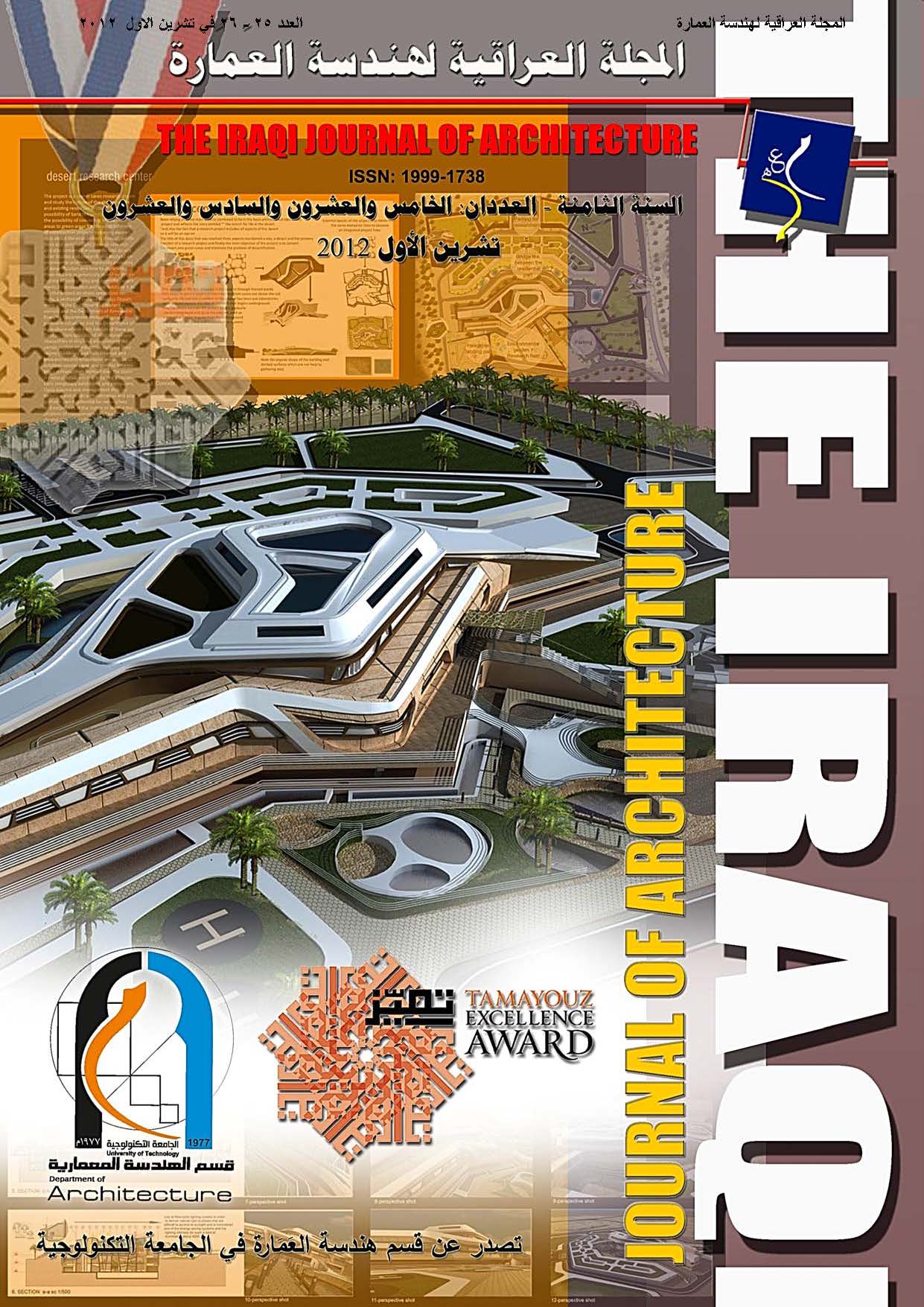CAVE System Technique as One of the Most Important Applications of Virtual Reality in Architecture
Abstract
"Virtual reality technology is the most important techniques reached by the technological revolution in the last decades of the twentieth century. It had a significant impact in various fields of life, especially in the field of architecture through the presentation and realizing the product of architecture, The improve in technology and virtual reality techniques, including CAVE system
was depend on how to understand the third dimension of space and sense of it. So it was necessary to keep pace with this development locally in Iraq and try to show its impact on
this evolution in the perception of space and the sense of being part of it. From here the research problem identified as: (the impact of the cave system techniques in the perception of space at the local level). The aim of this research was to show the improvement in receiver perception when the technological developments taking place in the world of virtual reality.
To achieve this aim the research follows these steps:
• Develop a comprehensive theoretical framework by presentation the most important factors affected in the receiver perception and the properties of perceived characteristics of space to identify the most important items that affect the process of cognition and the characteristics of the cognitive space perceived.
• Creating a local virtual environment experience using a cave system technology, and applied to an architectural project designed by the researcher in the Department of Architecture - University of Technology.
• Measure the level of awareness of the recipient when using the cave system technology that have been created in this research by comparing with the normal computer screen technology.
The research reach a number of conclusions showing improvement in the performance of technical CAVE system in the perception of space compared to traditional techniques the computer screen."
Downloads
References
Sallah , Jaffer, "Utilizing Virtual Reality in Architecture resentation"
AfKlercker , J., "CAVE – Interface in CAAD- Education?" in proceedings of The Fourth Conference on Computer Aided Architectural Design Research in Asia , Shanghai ( China , 5-7 may 1999).
Kitchens, Kevin , "Intractive Building. Design in Virtual Enviroment School of Constraction , the University of Southern , Mississippi , Hattiesburg , MS39406 ,USA,p.33.
Sallah , Jaffer, "Utilizing Virtual Reality in Architecture: System Model , . resentatio Technology Department, University Utara Malaysia . Amaster Thesis Introduction to The
AfKlercker , J., "CAVE – Interface inCAAD- Education?" in proceedings of The Fourth Conference on Computer Aided Architectural Design Research in Asia , Shanghai ( China , 5-7 may 1999).
You are free to use the work, but you have to attribute (refer to) the work in the manner specified by the author or licensor (but not in any way that suggests that they endorse you or your use of the work).
IRAQI J. ARCHIT & PLANN grants you the right to publish the metadata of the journal, it's issues and articles under the terms of the Creative Commons Attribution-ShareAlike 4.0 International License.
Author(s) hold the copyright of their aricles without restrictions. However, IRAQI J. ARCHIT & PLANN holds publishing rights for articles and their revisions once the article is published.
Authors can archive pre-prints (ie pre-refereeing) and post-prints (i.e. final draft post-refereeing) versions of the work they submitted to IRAQI J. ARCHIT & PLANN using non-for-profit open-access servers whether on author's personal website and/or institutional repositories including the university or research center where the author work.. For post-prints, only the IRAQI J. ARCHIT & PLANN’s as-published PDF version is permitted and the published source (IRAQI J. ARCHIT & PLANN’s website) must be clearly acknowledged within the archiving webpage.






